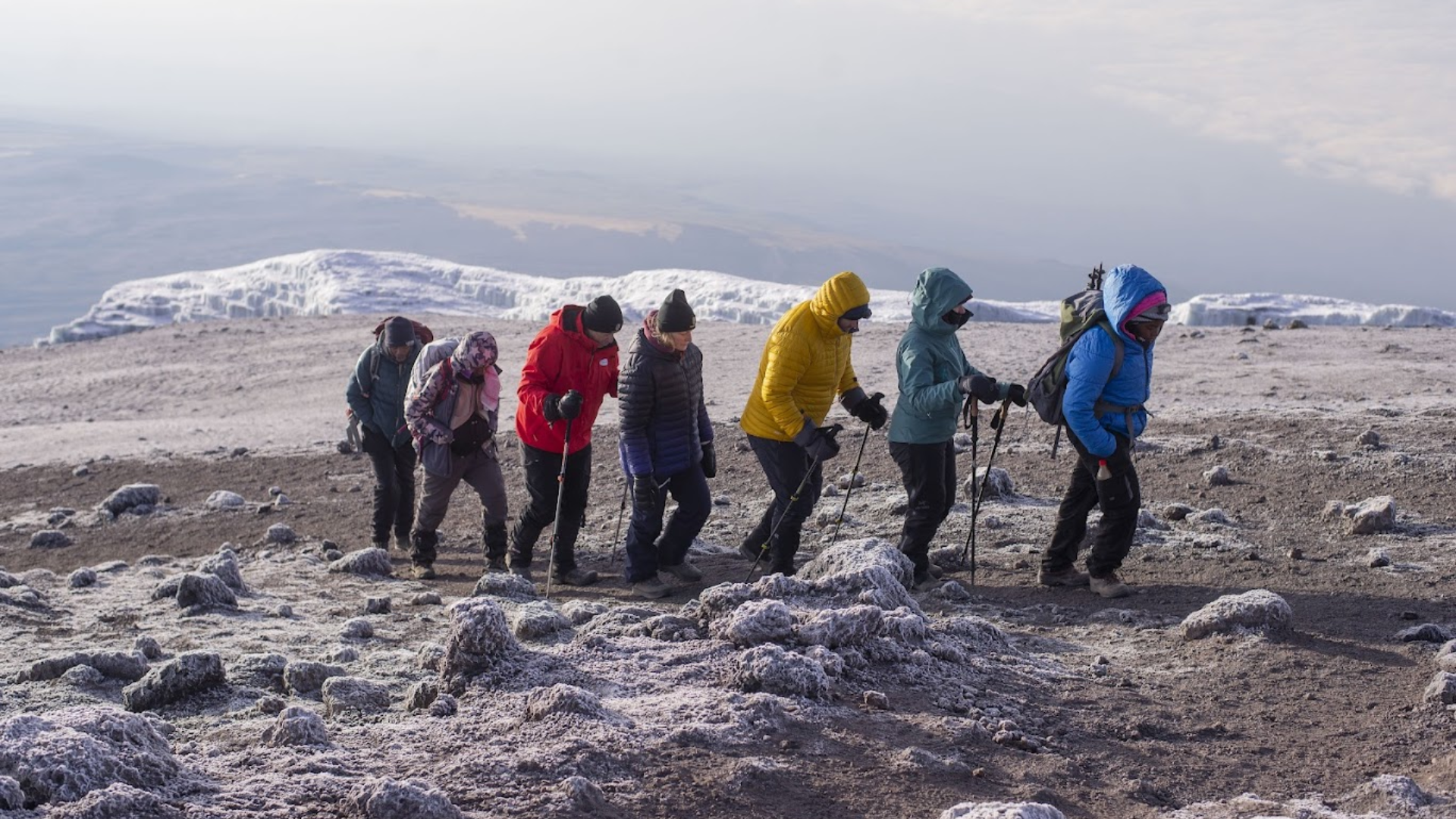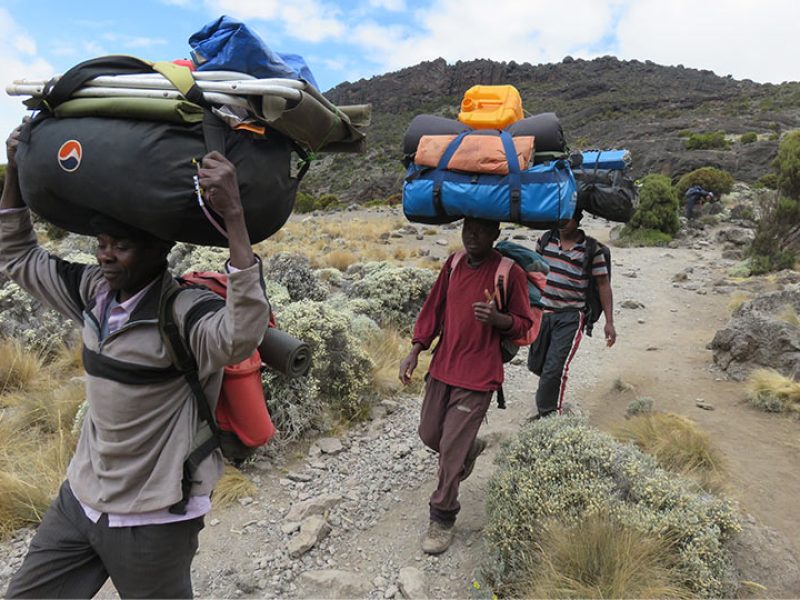If you’re a brave mountaineer and adventure lover, read below what to expect and carry on Mount Kilimanjaro!
When gearing up for your Mount Kilimanjaro adventure, you’re responsible for carrying the items you’ll need during the day before you reach your next campsite. Our skilled porters will take care of carrying your other belongings. A backpack with a volume capacity of around 30 liters (2000 cubic inches) works well – not too big, not too small.
Climbers should prepare their daypacks or backpacks, while other belongings go in a duffel bag for the porters to handle. Your daypack’s contents should be tailored to your daily needs.
The rule of thumb is to carry only what’s necessary for the day. For instance, you don’t need cold weather gear in the rainforest. Likewise, bug spray isn’t relevant at higher elevations.
Essential Items for Your Day Pack on the Kilimanjaro Trek – What to Carry on Mount Kilimanjaro
Once you’re equipped with your complete trekking attire, including a hat, shirt, underwear, hiking pants, socks, and boots, let’s explore what you should pack in your daypack.
Protection from the Elements:
- Sunglasses for eye protection
- Buff or Neck Gaiter (optional)
- Warm Knit Hat
- Soft Jacket (fleece or soft-shell)
- Waterproof Jacket (breathable with hood)
- Thin Gloves
- Waterproof Pants (breathable)
- Trekking poles (optional, but recommended, especially for the summit)
Hydration and Energy:
- Water Bottle (Nalgene, 32 oz.)
- Water Bladder (Camelbak type, 3 liters)
- Snacks (lightweight, high calorie, high energy – optional)
- Electrolytes (powder or tablets – optional)
Essential Miscellaneous:
- Camera (with extra batteries – optional)
- Lip Balm
- Sunscreen
- Hand Sanitizer
- Toilet Paper
- First Aid Kit
- Various Bags
These items form the core of what you’ll need in your daypack. Keep in mind that specifics might change based on factors like travel time to camp, terrain, weather conditions, and your personal requirements.
Feel free to consult your guide if you’re unsure about your packing choices. Their expertise ensures you’re well-prepared for your Kilimanjaro expedition.
How to Pack Your Day Pack Effectively – What to Carry on Mount Kilimanjaro
For an organized daypack, avoid haphazardly tossing items, risking them falling out or getting lost. Instead, use a strategic approach by using plastic bags, dry bags, or stuff sacks to categorize and secure your belongings. For instance, group small bottles like prescriptions, sunscreen, lip balm, and hand sanitizer within a zip-lock bag. Similarly, organize snacks in a separate bag, while clothing accessories like hats, gloves, and neck gaiters can go into a stuff sack.
Balancing the load is key
Place heavier items, such as water bottles, near your back’s center to maintain balance aligned with your spine. Avoid unevenly placing heavy items, which could lead to awkward tilting. If available, use compression straps to secure items and prevent shifting as you walk.
Consistency is crucial
Keep your items in the same spots, whether in the main compartment, side pockets, or pant pockets. This ensures easy access without searching for essentials.
If you liked our What Do You Need to Carry on Mount Kilimanjaro, you might also like to read our Toilets on Kilimanjaro: What to Expect.
What Belongs in Your Duffel Bag – What to Carry on Mount Kilimanjaro?
All items that don’t go in your daypack should be packed in your duffel bag.Porters will carry your duffel bag between campsites. As climbers set off in the morning, porters remain behind to pack up tents and tidy the campsite. They then move ahead, reaching the next campsite ahead of climbers. Here, they set up camp, cook, and provide water. Climbers generally reconnect with their porters at the next overnight stop, accessing their belongings carried by the porters only at day’s end.
The duffel bag weight limit, set by Kilimanjaro park authorities, is 15 kilograms. Use plastic bags or dry bags to keep belongings organized and dry. While a backpack is acceptable, porters prefer duffel bags due to how they carry loads on their heads, making duffel bags more suitable for the journey.










Comment (0)